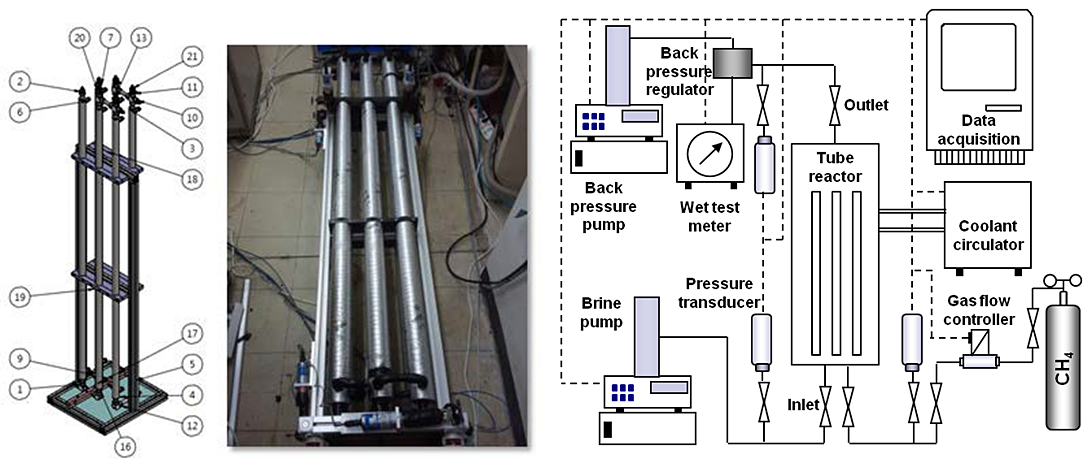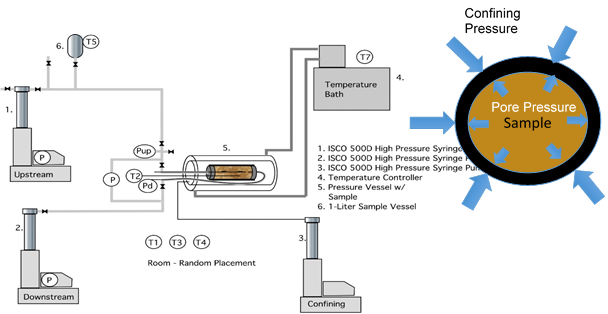Advanced Simulation and Experiments of Strongly Couple Geomechanics and Flow for Gas Hydrate Deposits: Validation and Field Application
Project Number
DE-FE0028973/FWP-00003997
Last Reviewed Dated
09/01/2019
Goal
The objective of the proposed research is to investigate geomechanical responses induced by depressurization on gas hydrate bearing reservoirs, both in marine and permafrost-associated settings, through integrated experimental and numerical simulation studies. Numerical evaluation of two well-characterized sites will be performed: one based on the deposits observed at the Ulleung Basin (Korean East Sea) UBGH2-6 site and the other based in the West End Prudhoe Bay (Alaska North Slope).
Performer(s)
Texas A&M University (TAMU), College Station, TX
The Korean Institute of Geoscience and Mineral Resources (KIGAM), Daejeon, South Korea.
The Lawrence Berkeley National Laboratory, Berkeley, CA (through associated Field Work Proposal FWP-00003997)
Background
While all gas hydrate numerical simulation remains in an early stage due to limited available field data for validation and calibration, the ability to numerically simulate the thermodynamic and hydraulic response of gas hydrate reservoirs to depressurization-based production is relatively well-advanced. However, the unconsolidated nature and potential high-pressure drawdowns required indicate that any effort to predict reservoir performance must incorporate geomechanical phenomena as well.
This project will feature a collaboration with KIGAM. KIGAM has constructed world-class, multi-scale reactors and has performed extensive experimental studies on the geomechanical phenomena in gas hydrate bearing sediments. These prior findings will be further evaluated at KIGAM and tested by new experimental studies at Lawrence Berkeley National Laboratory (LBNL) and TAMU that are designed to capture complex coupled physical processes between flow and geomechanics, such as sand production, capillarity, and formation of secondary hydrates.
The project will develop an advanced coupled geomechanics and non-isothermal flow simulator to better account for potential large deformations and strong capillarity. This new code will be validated using data from the literature, from previous work by the project team, and with the results of newly conducted experimental studies.
Impact
The simulation and experimental work related to specific sites will yield new and valuable insight into those locations and the expected behavior of the gas hydrate system at the locations in response to dissociation-based production of gas from hydrate. The developed simulator will be available for future planning of gas hydrate production tests and will be valuable in the determination of well designs and test procedures, and test result evaluation.
Accomplishments (most recent listed first)
- Review and evaluation of experimental data of gas hydrate at various scales (cm, 1 m, 1.5 m 3D, 10 m) for gas production of Ulleung Basin
- Completion of laboratory experiments for numerical model verification including:
- Geomechanical changes from effective stress changes during dissociation (including sand production)
- Geomechanical changes resulting from secondary hydrate and capillary pressure changes
- Construction of the relative permeability data in presence of hydrate
- Identification of hysteresis in hydrate stability
- Incorporation of laboratory data into numerical simulation model including:
- Inputs and preliminary scoping calculations
- Determination of new constitutive relationships
- Development of a geological model
- Completion of modeling of coupled flow and geomechanics in gas hydrate focused on:
- Development of a coupled flow and geomechanics simulator for large deformation
- Validation with experimental tests of depressurization
- Modeling of sand production and plastic behavior
- Modeling of induced changes by the formation of secondary hydrates: frost-heave, strong capillarity, and induced fracturing
- Field-scale simulation of Prudhoe Bay Unit (PBU) L106
- Field-scale simulation of Ulleung Basin
- Completion of simulation-based analysis of system behavior at the Ignik-Sikumi (PBU L-pad) and Ulleung basin hydrate deposits
Current Status
Activity under the project has been fully completed and results are captured in the Final Scientific and Technical Report which is available from the link in the Additional Information section below.
DOE Contribution
$731,415 (including funding to both TAMU and LBNL)





